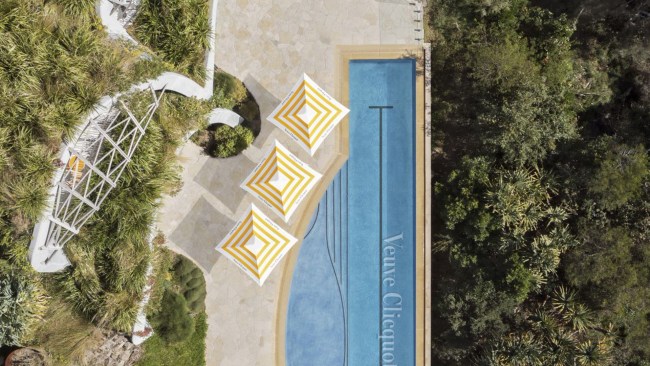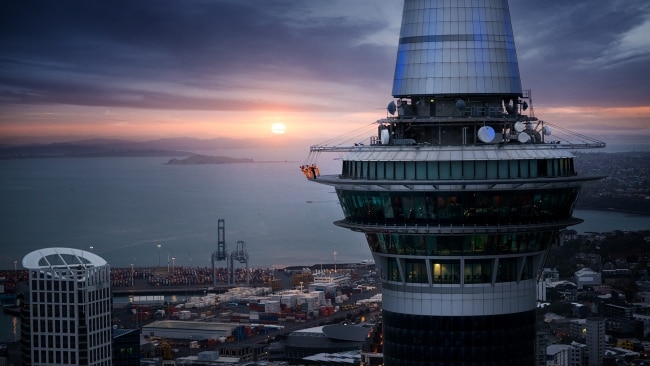Chilean wine comes of age with tourism boom in Cachapoal, Colchagua
Wine tourism in Chile has come of age, with top-notch restaurants and designer digs near Santiago.
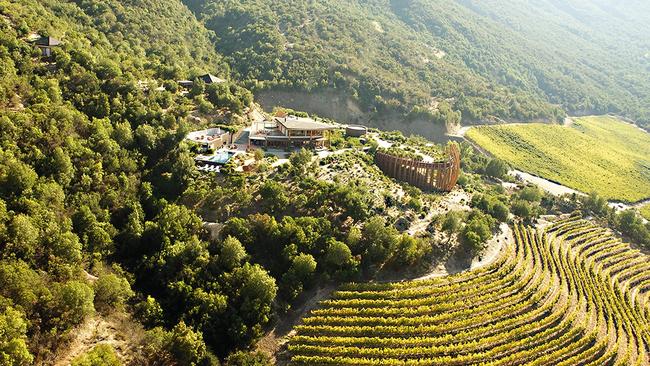
The middle of Chile’s southern wine region is, in theory, not the most obvious location for a building designed to resemble Bilbao’s Guggenheim Museum. But when I glimpse the titanium-roof structure perched atop a hill of autumnal grape vines, its waves bronzed in the afternoon sun, the concept makes complete sense, and even more so when I learn the colour is intended as a tribute to Millahue, this particular neighbourhood within the Cachapoal Valley, which translates as “place of gold” in the local Mapuche language.
The undulations, I’m told, were inspired by the surrounding rolling fields. Dramatic swaths of vineyards tucked between the jagged Pacific coast and the foothills of the Andes, this part of the Chilean countryside is easy to fall in love with. The sloping hills, valleys, gorges and lakes; the Mediterranean climate; plus the wind blowing off the ocean to the west in the morning, hitting the Andes in the east, and then coming back to cool the region in the evening — it all makes a particularly attractive prospect for grape growers.
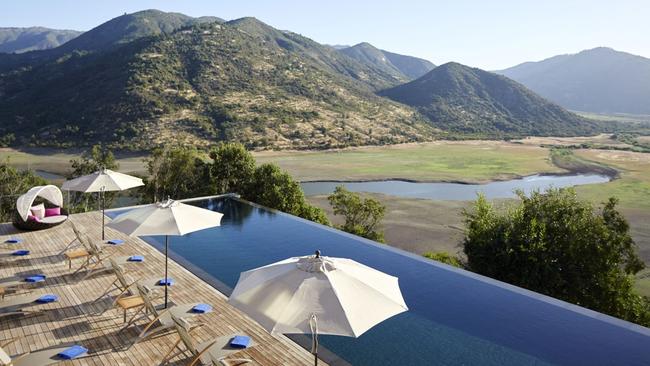
Within a two-hour drive of Santiago, one of South America’s most vibrant capitals, it’s hard to believe Cachapoal and neighbouring Colchagua valleys were a tourist desert as recently as a decade ago. Hotels and restaurants were convenient at best and characterless at worst, and the concept of cellar doors and winery tours was non-existent. Today, the region has a wine trail, apparently the first of its kind in the country, linking architecturally bold new estates. There are excellent restaurants, horse riding, hot-air balloons, spas and even a handful of eccentric craft centres and museums. And while the area can be visited on a day trip from Santiago, it would be a shame not to stay at a beautiful boutique property in the area. And that includes the Guggenheim-esque building at Vina Vik estate.
The brainchild of Norwegian entrepreneur and hotelier Alexander Vik, Vina Vik estate covers 4300ha, mostly planted with malbec, cabernet sauvignon and carmenere, arguably Chile’s most famous grape variety. Ten years ago, there was nothing here but golden fields and plenty of potential. With an ambitious goal of producing South America’s best wine, Vik set about creating one of the continent’s most noteworthy estates, with the hotel, its wines and its jaw-dropping semi-subterranean cellar door all winning awards.
Opened in 2014, the hotel’s 22 guestrooms were each conceived by a different artist. Some are themed — think, Fornasetti and Hermes — while others take inspiration from different countries, art styles and time periods. Takeo Hanazawa’s Shogun Suite comes with a low-slung bed, hinoki wood tub in the bathroom and washi paper bedside lights; the Valenzuela Suite has huge red murals by Chilean artist Sebastian Valenzuela and a Mondrian-style oak floor; and the Azulejo Suite nods to Portugal, its wall murals crafted from handpainted blue-and-white tiles.
Art also adorns public spaces, including the living area, dominated by a painting by abstract expressionist Roberto Matta, one of Chile’s best-known artists. Designed by local architect Smiljan Radic, the cellar features an alfresco granite boulder installation by Radic and his wife Marcela Correa; inside, a wine-inspired mural by Eduardo Cardoso spans multiple walls across myriad rooms.
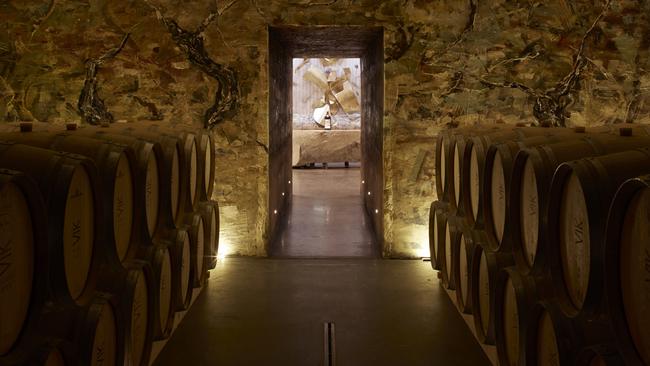
Guests enjoy private tastings, exploring the estate on horseback or mountain bike, or simply relaxing on sunlounges overlooking the striking cantilevered pool made of Absolute Nero granite and extending out over the valley and lake below. There are also wine-themed spa treatments, including a massage using house-made grapeseed oil or a body scrub with brown sugar and grape skin.
A 45-minute drive southwest in the Colchagua Valley, other vineyards have begun luring tourists with more than just a flight of wine. A member of Relais & Chateaux, Lapostolle Residence features four individually designed villas, each with a terrace overlooking the biodynamic vineyard.
Meals in the intimate restaurant are prepared using products plucked from an on-site organic vegetable and herb garden, while honey, olive oil and fruit are sourced from the orchard. Time your visit right to see grapes being harvested or otherwise there are winery tours that end with a tasting in the cavernous barrel room.
The new wave of accommodation captures the postcard-perfect countryside and emphasises that vineyard visits in Chile are not for those in a hurry. Australians will be familiar with paying a token sum of money to taste a handful of wines; there’s no tour, no talk on the winemaking process, and no reservations are needed. In Chile, you’re required to ring ahead and then dedicate a couple of hours to each establishment on your itinerary. Expect a tour of the vines, a visit to the fermenting facilities and a full tasting of the estate’s suite of wines — cheese platter optional.
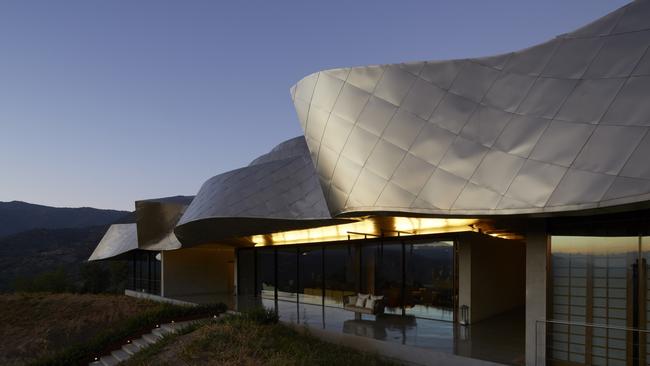
There are seriously savvy producers hereabouts so each estate comes with a different story and diversions other than what’s in the bottle. The carbon-neutral winery at Montes was designed with feng shui principles in mind and features a freshly minted restaurant, Fuegos de Apalta (Fires of Apalta), by applauded Argentinian chef Francis Mallmann; the focus is Patagonian fare, cooked over an open fire. Nearby, Neyen is home to some of the oldest vines in Chile, with cabernet grapes planted in 1892; enjoy a glass of wine and plateada (beef stew) in the 1890 cellar, or have staff take you trekking in the mountains with a packed picnic lunch. Many visit the traditional Viu Manent estate for its beautiful setting, but many more come for the horse and hot air balloon rides and new alfresco restaurant Rayuela, set under a canopy of vines.
Also on the Viu Manent estate is chef Pilar Rodriguez’s Food & Wine Studio, by far the biggest culinary drawcard in the Colchagua Valley and arguably one of the hottest tables in the country. Having worked in fashion for most of her life, Rodriguez retrained as a chef when she turned 40, attending prestigious culinary arts institution Le Cordon Bleu in Paris. Her restaurant — a light-filled space once used as a weekend home — offers by-appointment cooking classes, and is otherwise open only for lunch on weekends. It’s no surprise Rodriguez thinks first about the wine when crafting a menu.
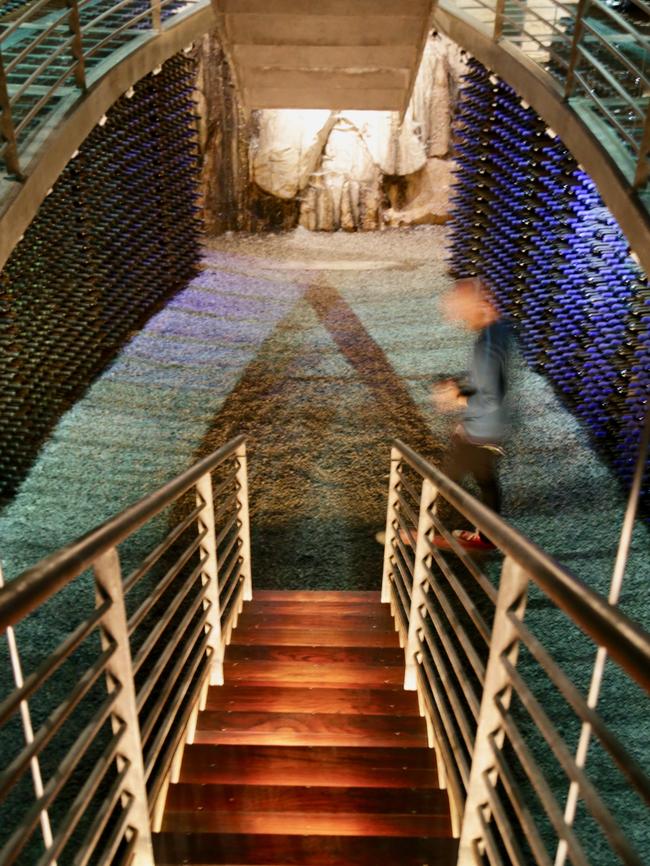
“The food should dance with the wine, not compete with it,” she says, serving me impossibly tender octopus with lemon, Leccino oil and sea asparagus in a bowl formed of granite from the nearby Tinguiririca River. Course two is an equally pretty plate of pork cheeks atop squid-ink pasta, baby kale, basil and flowers. Rodriguez is passionate about local producers, and lists each one featured on the day’s menu.
When I visit, dishes use olive oil made by Juan Carlos Diaz on his estate up the road, the merquen (smoked chilli pepper) comes from local company Etnia, and the fleur de sel from salt lagoons on Colchagua’s coast.
Local creations of a different kind are on display at Museo de Colchagua, in the valley’s main town, Santa Cruz. The largest private museum in Chile, the space houses the impressive, albeit offbeat, collection of controversial entrepreneur Carlos Cardoen. There are pre-Columbian anthropomorphic ceramics, automobiles, weapons and World War II relics, Mapuche silver and huasos (cowboy) gear; many come for El Gran Rescate (The Big Rescue) exhibit alone, a shrine to the 2010 rescue of 33 Chilean miners trapped 700m underground for 69 days.
The museum is almost as incongruous here, surrounded by craft stores selling colourful weaving and ceramics, as the Frank Gehry-inspired Vina Vik. But just like Vik, it manages to surprise and delight, and offers an unexpected taste of Chile that will only improve with age.
Natasha Dragun was a guest of Tourism Chile.
***
CHECKLIST
Vina Vik Millahue from $1129 a double, minimum two-night stays.
Lapostolle Residence from $1984 a double.
More:
• neyen.cl
CARMENERE CALLING
Following the Phylloxera plague that wiped out a majority of Europe’s grapes in the late 1800s, carmenere was considered extinct. A few cuttings of the grape variety had been imported to Chile just before the wipeout, but local growers had mistakenly identified them as merlot. The vines flourished in the valleys around Santiago thanks to the region’s infrequent rainfall and hot days, a contrast to the grape’s French home. It wasn’t until 1994 that vintners realised that some of Chile’s “merlot” vines actually showed the same growing qualities as carmenere, and with that, the grape variety was “rediscovered”. Today, Chile is home to about 90 per cent of the world’s carmenere plantations, with the grape producing a distinctive medium-bodied red wine known for its notes of berries and spice.

